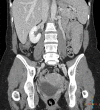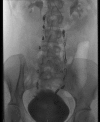Pelvic Congestion Syndrome: Systematic Review of Treatment Success
- PMID: 29628614
- PMCID: PMC5886772
- DOI: 10.1055/s-0038-1636519
Pelvic Congestion Syndrome: Systematic Review of Treatment Success
Abstract
Pelvic venous insufficiency is now a well-characterized etiology of pelvic congestion syndrome (PCS). The prevalence of CPP is 15% in females aged 18 to 50 years in the United States and up to 43.4% worldwide. In addition to individual physical, emotional, and quality-of-life implications of CPP, there are profound healthcare and socioeconomic expenses with estimated annual direct and indirect costs in the United States in excess of 39 billion dollars. PCS consists of clinical symptoms with concomitant anatomic and physiologic abnormalities originating in venous insufficiency. The etiology of PCS is diverse involving both mechanical and hormonal factors contributing to venous dilatation (>5 mm) and insufficiency. Factors affecting the diagnosis of PCS include variance of causes and clinical presentations of pelvic pain and relatively low sensitivity of noninvasive diagnostic imaging and laparoscopy to identify insufficiency compared with catheter venogram. A systematic review of the literature evaluating patient outcomes following percutaneous treatment of PCS is presented.
Keywords: embolization; interventional radiology; pelvic congestion syndrome; pelvic pain; venous reflux.
Figures



References
-
- Ganeshan A, Upponi S, Hon L Q, Uthappa M C, Warakaulle D R, Uberoi R. Chronic pelvic pain due to pelvic congestion syndrome: the role of diagnostic and interventional radiology. Cardiovasc Intervent Radiol. 2007;30(06):1105–1111. - PubMed
-
- Duncan C H, Taylor H C., Jr A psychosomatic study of pelvic congestion. Am J Obstet Gynecol. 1952;64(01):1–12. - PubMed
-
- Taylor H C., Jr Vascular congestion and hyperemia; their effect on function and structure in the female reproductive organs; the clinical aspects of the congestion-fibrosis syndrome. Am J Obstet Gynecol. 1949;57(04):637–653. - PubMed
-
- Taylor H C. Pelvic pain based on a vascular and autonomic nervous system disorder. Am J Obstet Gynecol. 1954;67(06):1177–1196. - PubMed
-
- Beard R W, Reginald P W, Wadsworth J. Clinical features of women with chronic lower abdominal pain and pelvic congestion. Br J Obstet Gynaecol. 1988;95(02):153–161. - PubMed
Publication types
LinkOut - more resources
Full Text Sources
Other Literature Sources
Medical

